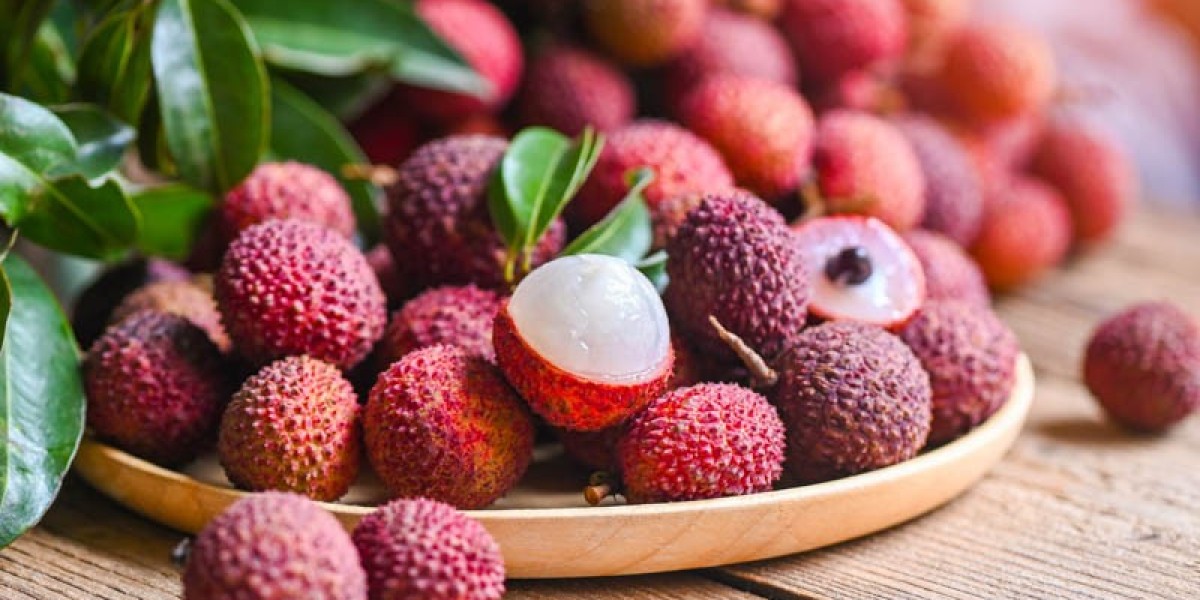The lychee fruit is a tropical treasure—sweet, fragrant, juicy, and bursting with health benefits. Whether you’ve seen it in your local market or heard about it in wellness circles, lychee (pronounced lee-chee or lie-chee) is quickly becoming one of the most beloved exotic fruits around the world. But what exactly is lychee? How do you eat lychee? How many lychee can you eat safely? And how is it used in different cultures?
This in-depth guide from Caimlu explores everything you need to know about lychee fruit, including its nutritional profile, how to enjoy it, its Spanish translation, and its lookalikes in the fruit kingdom. Let’s peel back the layers of this tropical wonder.
What Is Lychee Fruit?
Lychee fruit comes from the Litchi chinensis tree, which is native to Southern China and parts of Southeast Asia. It has since spread to other tropical regions like India, Thailand, Vietnam, and even parts of Africa and the Americas. The fruit itself is small, round, and roughly the size of a large cherry or small plum. It has a tough, reddish-pink outer skin covered in small spikes, but the inside is what people crave—white, translucent flesh that is juicy, fragrant, and sweet.
Lychee in Different Cultures
In Spanish-speaking countries, lychee fruit in Spanish is called fruta de lichi or simply lichi. You might also come across spelling variations such as lycee fruit or lechee fruit, but they all refer to the same delicious fruit.
How Do You Eat Lychee?
Eating lychee is very easy and requires no special tools. Here’s a step-by-step guide:
Wash the fruit: Before peeling, rinse the lychee under cool water to remove any debris.
Peel the outer skin: Use your fingers or a small knife to break through the bumpy skin. It should peel off easily.
Remove the seed: The center contains a shiny brown seed, which is not edible. Discard the seed.
Enjoy the flesh: The white, juicy pulp is ready to eat! You can enjoy it fresh or incorporate it into recipes.
Culinary Uses for Lychee
Lychees are incredibly versatile and can be enjoyed in many ways:
Fresh from the shell
Blended into smoothies
Added to fruit salads
Used in cocktails like lychee martinis
Cooked into syrups or jams
Frozen into desserts like sorbet or popsicles
Whether served alone or as part of a dish, lychee adds a luxurious touch with its unique floral sweetness.
How Many Lychee Can You Eat?
As with all fruits, moderation is key when consuming lychee. While lychees are healthy and hydrating, they are also high in natural sugars.
Recommended Intake:
Adults: 5 to 10 lychees per day is generally safe and healthy.
Children: 3 to 5 lychees per day is sufficient, especially if they are being eaten on an empty stomach.
Health Warning:
In rare cases, excessive consumption of unripe lychees—especially on an empty stomach—has been linked to low blood sugar levels and health issues in children. Always ensure the fruit is ripe and consume it as part of a balanced diet.
Nutritional Benefits of Lychee Fruit
Lychees are not only tasty but also nutrient-dense. They offer a wide array of health benefits, including:
1. Rich in Vitamin C
Lychees are packed with Vitamin C—100 grams provide over 100% of the daily recommended intake. This supports immunity, helps repair tissues, and promotes healthy skin.
2. Contains Antioxidants
Lychees are rich in polyphenols like flavonoids and oligonol. These antioxidants fight free radicals, reducing inflammation and supporting heart health.
3. Supports Digestion
Thanks to their water content and small amounts of dietary fiber, lychees can help regulate bowel movements and improve digestion.
4. Boosts Skin Health
Vitamin C, water content, and antioxidants combine to enhance skin elasticity and reduce signs of aging.
5. Hydrating Properties
With a high water content (over 80%), lychees help keep you hydrated—especially useful during hot weather or after physical activity.
Fruits Similar to a Lychee
If you love lychee, you might also enjoy these fruits similar to a lychee:
1. Longan
Nicknamed “dragon’s eye,” longan has a translucent interior like lychee but offers a more musky, subdued flavor.
2. Rambutan
Covered in hairy red skin, rambutan looks wild but has a taste and texture similar to lychee—just slightly more creamy.
3. Mangosteen
This purple tropical fruit offers a tangier, more citrusy flavor but shares lychee’s juicy texture.
Each of these fruits belongs to the same family or grows in similar climates, making them perfect substitutes or companions in tropical fruit platters.
Lychee in Traditional and Modern Wellness
In traditional Chinese medicine, lychee is believed to strengthen the body’s energy or “Qi,” improve blood circulation, and soothe the stomach. In modern wellness practices, lychee is seen as a skin-boosting, anti-aging, and immune-supportive food.
It’s increasingly used in:
Detox drinks
Herbal teas
Anti-aging skincare
Natural supplements
The presence of oligonol, a unique polyphenol found in lychee, has also attracted attention for its potential in reducing fatigue and supporting weight loss.
Fun Facts About Lychee
Lychees were a favorite fruit of Chinese emperors during the Tang Dynasty.
They are often seen as a symbol of love and romance in Chinese culture.
In Ayurveda, lychee is classified as a cooling fruit that balances excess heat in the body.
How to Store Lychees
To make the most of your lychee purchase:
Fresh lychees should be stored in the refrigerator and consumed within 5–7 days.
Peeled lychees can be frozen in airtight containers for up to 6 months.
Avoid exposing lychees to direct sunlight or leaving them at room temperature for too long.
Final Thoughts
The lychee fruit is more than just a sweet treat—it's a symbol of tropical abundance, cultural tradition, and modern wellness. From its delicious flavor and juicy texture to its array of health benefits, lychee deserves a place in your fruit bowl and your diet.
Whether you're enjoying it fresh, frozen, or as part of a drink or dessert, lychee is sure to leave a lasting impression on your taste buds and your well-being.
At Caimlu, we’re passionate about exploring natural foods like the lychee fruit that nourish your body and bring you closer to nature—one delicious bite at a time.








